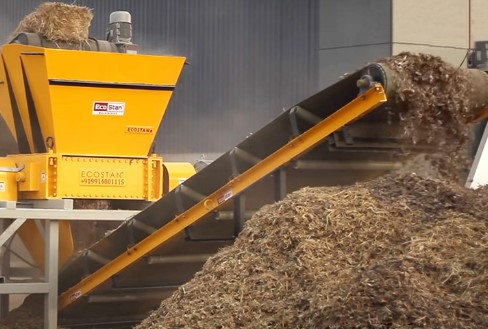Biomass pellets have been one of the most efficient and ecological fuels with the boom of the renewable energy industry. Biomass pellets consist of organic waste matter and are a great renewable source of energy without any adverse environmental impacts as they provide a healthy form of waste management. But to manufacture high-quality biomass pellets, you will require all of the right equipment: a biomass pellet machine.
Different models of biomass pellet machines found in the market make it rather tricky to settle on the correct one. Whether you are starting from home with small-scale biomass pellet plants or you are a giant industrial company, the full understanding of the machine comes with some essential tips that must be considered for them before facing such companies.
Key Factors to Consider When Choosing a Biomass Pellet Machine
- Production Capacity
Production capacity of a biomass pellet machine refers to the amount of material that the machine can process in a given time. Most machines are rated according to the output per hour, which could be as little as a few hundred kilograms up to several tons. For small-scale production, a 200-500 kg per hour machine would do. For large-scale industrial productions, machines rated at 1-2 tons per hour and above may be required.
As one chooses a machine, consider one’s current level of production demand and the capacity for future expansion. It’s always better to invest in a machine that has the capacity for increasing production.
- Material Type
Biomass pellet machines have the capacity for various raw materials, but different machines are compatible with different material types. Popular materials used to make pellets are:
- Solid wood residues: Sawdust, wood chips, and wood shavings are the better feedstocks for pellets industriais.
- Agricultural waste: Waste from agricultural products (straw, rice husk, corn stalk, etc.) can be processed into pellets.
- Other organic waste: Other wastes may also consist of paper, food waste, waste from plants, or any organic content that can be pelletized.
Ensure that the machine you opt for is compatible with the raw material you would like to process. Different machines are usually designed for different materials and can bring better efficiency and quality of pellets.
- Pellet Quality
The quality of the pellets produced is very important. The good-quality pellets should be of equal size, have smooth surface, and high density. Low-quality pellets can reduce combustion efficiency and wreck equipment.
Ask the supplier about the ability of the machine to control pellet size and shape. Features such as adjustable die settings and control over the moisture content of the raw material will affect the final quality of the pellets.
- Power Consumption and Energy Efficiency
Biomass pellet machines consume a lot of energy in the production of pellets, particularly in large quantities. Energy consumption is the biggest contributor to running costs. Even though they cost more in terms of capital input, energy-saving machines will prove to be cheaper as they will save you money on energy usage in the long term.
Seek pellet machines that have been manufactured to conserve energy. These machines have features such as optimized motors, low-maintenance parts, and advanced cooling systems.
- Maintenance and Durability
These machines as any other piece of machinery require regular maintenance to keep them working at their highest capacity. It should be constructed with sturdiness in mind, using heavy-duty materials (ideally some kind of steel we’ll talk about more on our FAQ page) that will withstand the rigors of extended use. Check if the manufacturer provides good customer support, spare parts availability, or maintenance guides in layman terms. It will also help prevent unexpected downtime, as regular maintenance will extend the life of the machine.
- Cost and ROI
The cost of the machine is a crucial deciding factor while opting for biomass pellet machines. However, here the initial investment should be weighed against the running cost over the long term. The factors involved include energy consumption, maintenance, and possible down time.
A higher initial cost machine will payback in the long run, especially if it allows better efficiency and durability with more output.
Conclusion
The selection of the right biomass pellet machine depends on several factors, such as production capacity, material compatibility, quality of pellets, energy efficiency, maintenance needs, and cost. Whether you have a small farm or a large-scale industrial operation, understanding these key elements will help you choose a machine that meets your needs and enhances your productivity.
For the best, reliable biomass pellet machines, check Ecostan , a major supplier in this industry and famous for its strong and energy-saving pelletizing machine.
Spend time on the right machine to achieve a successful outcome in your biomass pellet production towards sustainable energy sources and maximize returns on investment.

